On the occasion of the two hundred and fiftieth anniversary of the birth of the great Austrian composer Wolfgang Amadeus Mozart (Salzburg, 1756 - Vienna, 1791), the Mozarthaus, a permanent museum tour in Mozart’s only surviving Viennese apartment, was opened on January 27, 2006. In a total area of about a thousand square meters and with the same arrangement of rooms that the building presented in the days when Mozart lived there with his family, the building offers visitors the opportunity to learn not only a great deal about the character and his works, but also about the personal and social situation and what Vienna looked like at that time. It was certainly a very different city and much less populated than today: consider that within the city walls, the area that now corresponds to the first district had just over fifty thousand inhabitants.
Now at number 5 Domgasse, the apartment originally had its entrance at Schulerstrasse 8 (then Grosse Schulerstrasse, Stadt number 845). Stately in appearance, the house was divided into two floors in the seventeenth century, until it was remodeled in 1716 by the then owner, master stonemason Andrea Simone Carove, so that when Mozart moved in in 1784 the house was on three floors as it is today. The composer obtained the right of domicile on the main floor, which had four rooms, two storerooms, kitchen, ground floor, cellar and two wooden vaults for an annual fee of about 450 florins, which accrued to the Camesina family, or rather to Maria Anna, the widowed daughter-in-law of the court plasterer Alberto Camesina, who had taken over the house after the death of his father-in-law Carove around 1720.
This is where Mozart and his family lived from 1784 to 1787: today it stands as a valuable testimony, as it is the largest, most elegant and most expensive apartment Mozart lived in and the only one still intact today. The centerpiece of the Viennese Mozarthaus is theapartment itself: this is where he composed one of his most famous works, The Marriage of Figaro, as well as three of the six Haydn quartets. Curated by the Wien Museum, the apartment includes images and documents through which the public has the opportunity to learn more about Mozart and his family background, and it also houses a musical clock, made around 1790, which reproduces a variation of the Andante for a cylinder in a small organ, which Mozart composed for this very clock.
The second floor, Mozart’s Music, on the other hand, gives visitors an overview of his principal musical colleagues in the Vienna of the time, including his collaboration with librettist Lorenzo da Ponte on The Marriage of Figaro and Don Giovanni. From the original stucco ceilings and wall paintings, one gets a sense of how the room was decorated in the composer’s time. The Requiem, which remained unfinished due to his untimely death, is also analyzed, and a multimedia theater installation titled The Magic Flute - Divine Laughter, showing three-dimensional collages of scenes from The Magic Flute, is also on view. The multimedia installation Figaro Parallelo gives an overview of Figaro’s performances in major international opera houses and the different approaches of directors.
The third and final floor of the building, entitled Mozart’s Vienna, aims to address Mozart’s personal and social situation in Vienna. He calls it to his father Leopold “the best place in the world for my profession” and “a magnificent place.”
Amultimedia installation points out all the places where Mozart lived during his years in Vienna. The audience has the opportunity to discover interesting information about the places where he performed and the major figures he gave life to during his activity, the socio-political context, his ties to Freemasonry, and his social life, including aspects of dancing, gambling, fashion, literature, and science. An installation with five peepholes gives a glimpse into the forbidden erotic entertainments of the time: rare shows set up on either side of the Grabennymphen installation, where visitors can look through a doorway onto a stylized scene showing refined gentlemen and ladies of easy virtue.
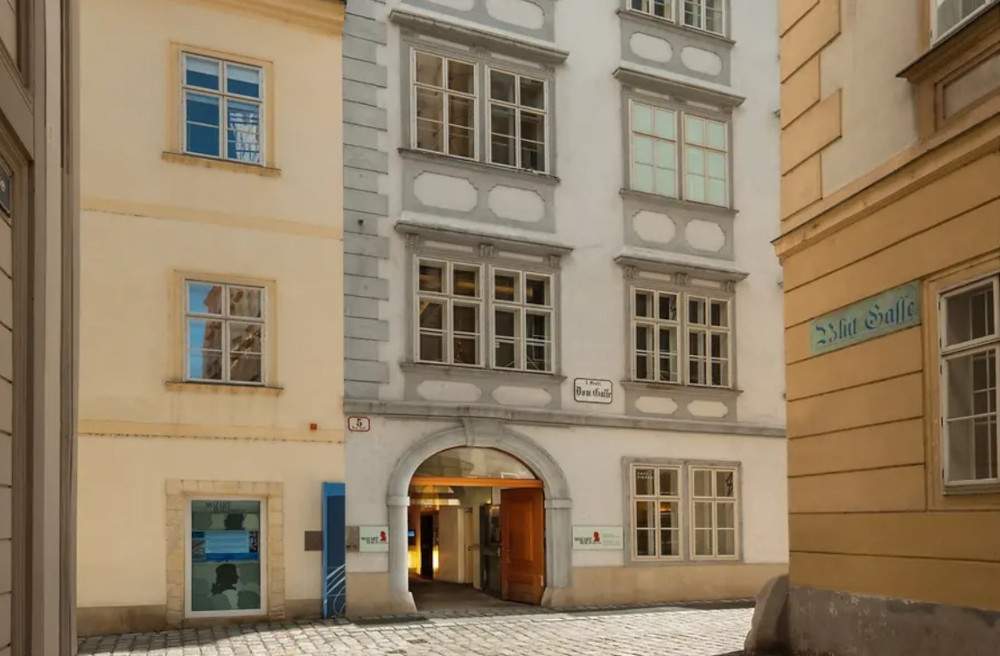
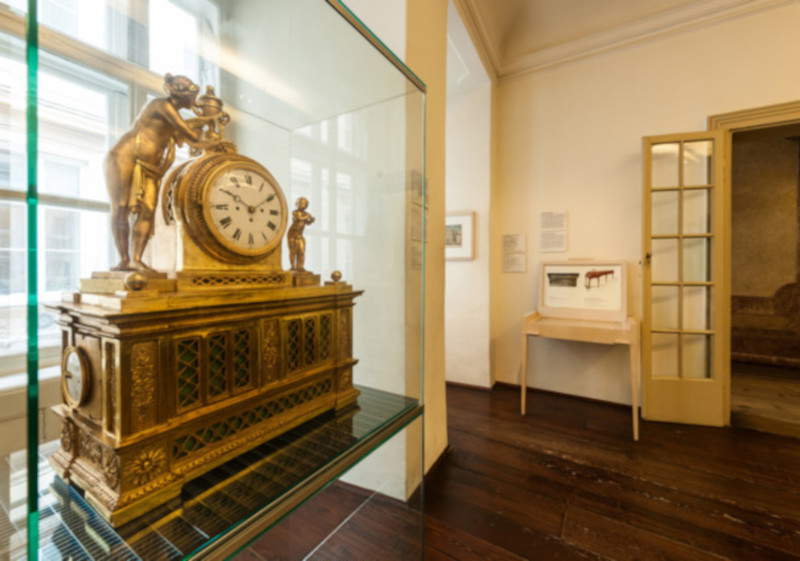
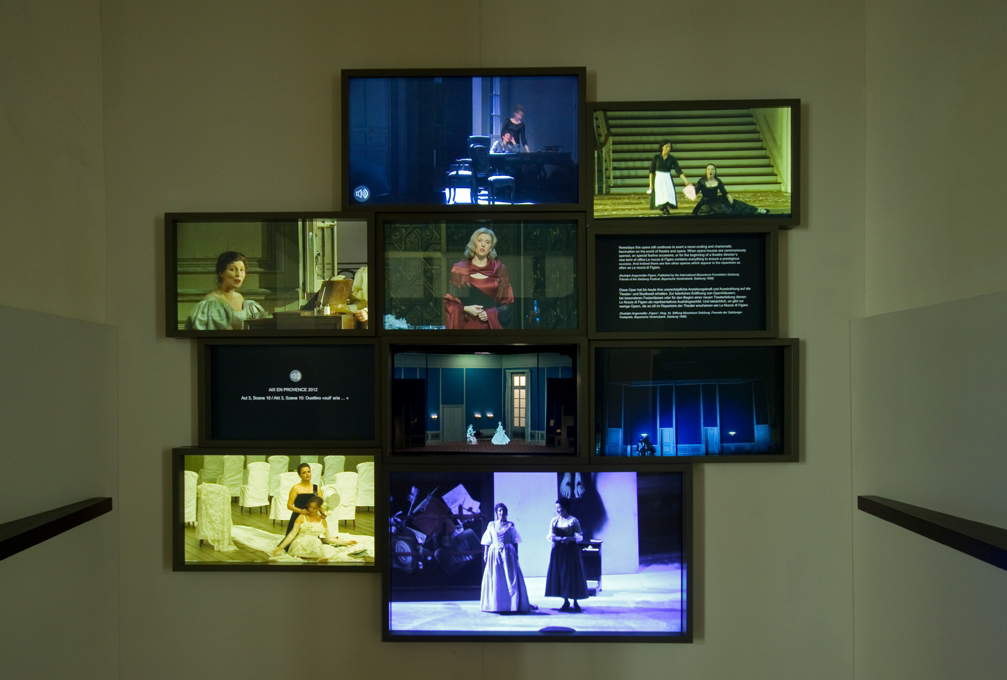
Considered to be a child prodigy par excellence, in that at the age of four he was already able to play the clavichord and compose minuets, and later had also learned to play the violin and organ, so much so that he performed at a very young age before the Empress of Austria Maria Theresa, Mozart also loved to enjoy the company of friends as an adult: in fact, he had a circle of distinguished friends and was invited to many concerts held in the homes of nobles. His older sister Maria Anna, known as Nannerl, also possessed great musical talent, although not at her brother’s levels. Born in Salzburg, the very young Amadeus began traveling through Western Europe at the urging of his father Leopold, also a composer and musician, to perfect his musical knowledge. After becoming organist of the Salzburg court under Prince Archbishop Hieronymus Graf Colloredo, Mozart lived in Vienna as an artist, composer and teacher. In 1782 he married Constanze Weber; the couple traveled to Salzburg and Prague, and of their six children only Karl Thomas and Franz Xaver Wolfgang survive infancy. Shortly after the first performance of The Magic Flute in Vienna’s Freihaustheater, the celebrated composer died in Vienna on December 5, 1791, at the age of 35, from “acute miliary fever,” leaving his Requiem unfinished.
The Viennese years were probably his happiest for him, not only because he composed some of his best operas here, including Le nozze di Figaro, the first in a series of collaborations with Lorenzo Da Ponte that also led to the creation of Don Giovanni and Così fan tutte (in four acts, the plot of Le nozze di Figaro revolves around the story of the Count d’Almaviva falling in love with the Countess’s maid, Susanna), but also because he loved to entertain himself at evening parties at the family home of the botanist, chemist and physician Nikolaus Joseph von Jacquin, which was frequented by scientists and artists.
Amadeus used to wake up at six in the morning to compose from seven to nine; the rest of the morning was devoted to lessons (he also taught his friend Nikolaus’s daughter Franziska von Jacquin to play the piano), and in the afternoon he would start composing again and continue until nine in the evening, except when he had to perform.
From his apartment in the Domgasse to the Jacquins’ house, Mozart had to cross the Glacis, an open space between the city walls surrounding Vienna and the suburbs. This area at the time was a recreational zone with trees, paths, meadows, ponds and lantern-lit avenues. The remains of the ancient city walls are still visible today.
In addition to the museum dedicated to the composer, the Mozarthaus now houses, in the second basement, the Bösendorfer Hall, with its characteristic Baroque vaulted ceiling, which is used because of its excellent acoustics for chamber music concerts, music recordings and events.
To learn more about the Mozarthaus you can visit austria.info
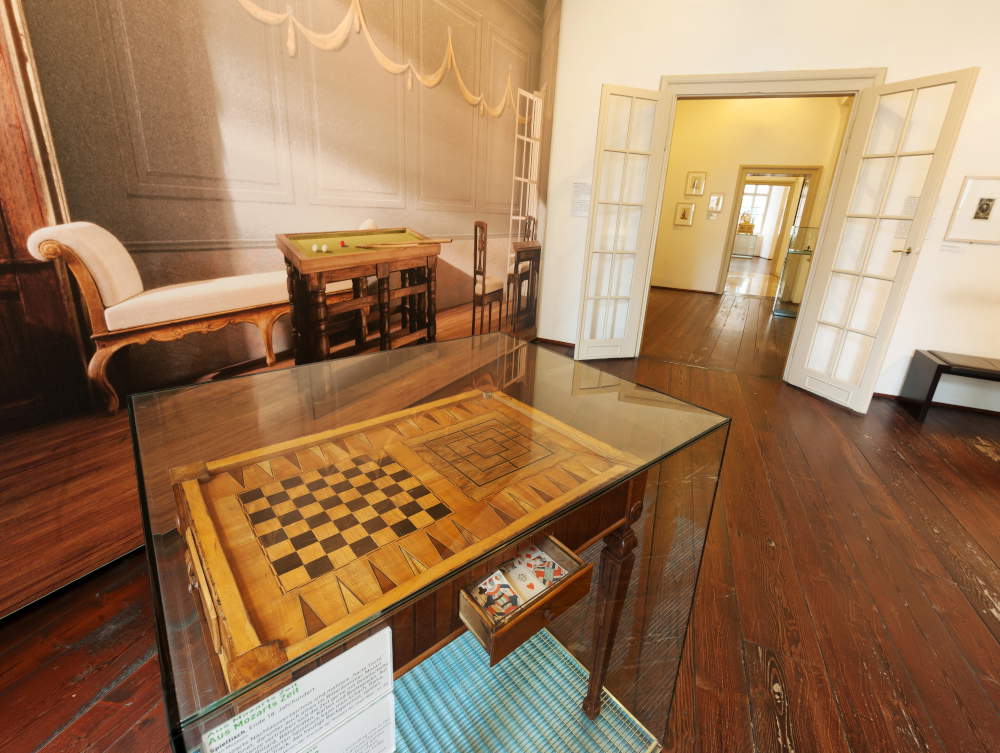
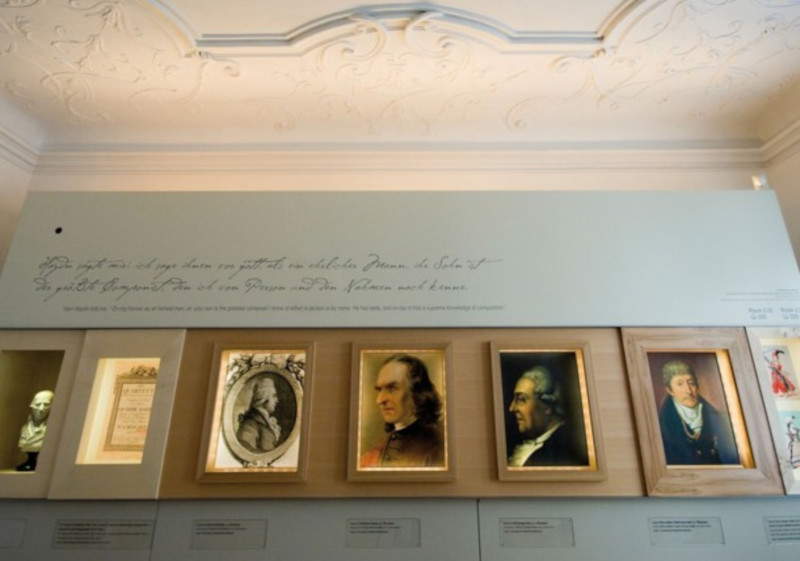
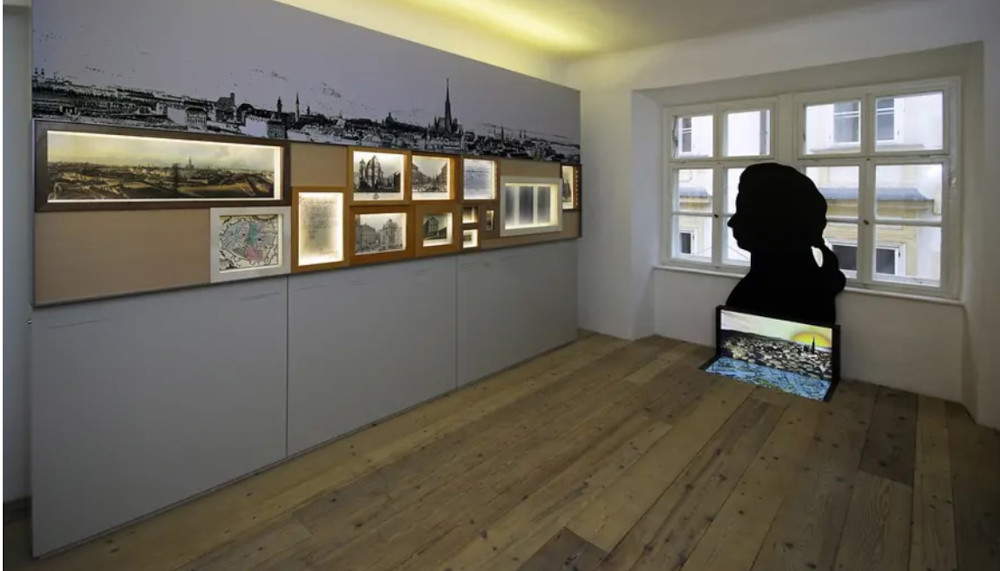
 |
| The Mozarthaus: the only Viennese apartment in which Mozart lived that can still be visited |
Warning: the translation into English of the original Italian article was created using automatic tools. We undertake to review all articles, but we do not guarantee the total absence of inaccuracies in the translation due to the program. You can find the original by clicking on the ITA button. If you find any mistake,please contact us.